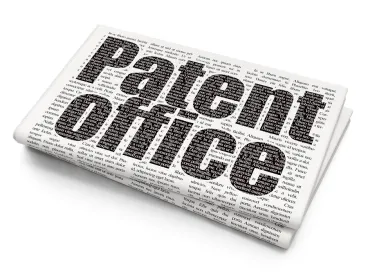In Hyatt v. Hirshfeld, Nos. 998 F.3d 1347 (Fed. Cir. June 1, 2021), the Federal Circuit vacated the lower court’s decision with respect to the prosecution laches issue. The district court erred in concluding that the PTO failed to prove prosecution laches. The case was remanded.
Background
Over 25 years ago the U.S. changed its patent term from 17 years from issue to 20 years from filing. Under the old law, some applicants pursued a strategy called “submarine patents” to delay issuance until the market developed, and thereby provided a more lucrative financial reward from suing for infringement. These patents were called “submarine patents” because their existence was secret from competitors until they emerged to the surface to surprise competitors.
35 U.S.C. § 154 was amended pursuant to the Uruguay Round Agreements Act (“URAA”), and the 20-year patent term became effective for those patent applications filed on or after June 8, 1995. Several applicants, including Hyatt, filed patent applications prior to June 8, 1995, to retain the possibility of a 17-years-from-issuance patent term. In fact, Hyatt filed 381 patent applications in the rush prior to June 8, 1995 (“GATT-Bubble” patents). Four of these applications are at issue in this appeal. These four patent applications claim priority to applications filed in the 1970’s and 80’s.
Between October 1995 and 2003, Hyatt filed amendments to the four applications. From 2003 to 2012, examination was stayed pending litigation (Hyatt filed district court complaints challenging USPTO rules). In 2012, examination resumed in a special art unit, created specifically to examine Hyatt’s applications. The PTO issued a series of notifications to Hyatt to streamline prosecution, in light of significant challenges created by the large number of claims and priority assertions. The notifications culminated with instructions Hyatt to “(i) select no more than 600 total claims to pursue for each of the 11 specifications; (ii) identify the priority date and support for that date with respect to each chosen claim; and (iii) submit a clean copy of the claims.” Id. at *9. The claims were rejected, and the rejection was upheld on appeal with respect to some claims (leaving some in condition for allowance).
In November 2005 and September 2009, Hyatt sued under 35 U.S.C. § 145, asking the district court to order the USPTO to issue patents based on the four applications.
In August 2016, the USPTO filed a motion to dismiss based on prosecution laches. Prosecution laches is an equitable affirmative defense and may “‘render a patent unenforceable when it has issued only after an unreasonable and unexplained delay in prosecution that constitutes an egregious misuse of the statutory patent system under a totality of the circumstances.’” Cancer Research Tech. Ltd. v. Barr Lab’ys Inc., 625 F.3d 724, 728 (Fed. Cir. 2010). Because genuine issues of material fact existed, the district court treated the motion to dismiss as a summary judgment motion and denied it.
In October 2017, the district court held a bench trial on whether prosecution laches barred the issuance of patents from the four applications. Hyatt moved for judgment on partial findings pursuant to Rule 52(c) of the Federal Rules of Civil Procedure (“FED. R. CIV. P. 52(c)”). According to Hyatt, the USPTO failed to prove prosecution laches because:
(i) [the USPTO] did not show it provided Hyatt with adequate warnings of laches rejections;
(ii) [the USPTO] did not prove intervening rights;
(iii) [the USPTO] never issued laches rejections for the four applications at issue; and
(iv) [the USPTO] failed to meet its burden of proving unreasonable and unexplained delay by a preponderance of the evidence.
Id. at *15. The district court then held bench trials on the patentability of the claims in the four applications.
In August 2018, the district court issued an order that prosecution laches did not bar issuance of those patents, and that the USPTO “failed to take the actions necessary to advance the prosecution of Hyatt’s applications.” Id. For example, the USPTO failed to accommodate Hyatt’s unique situation of so many pending patent applications, and any efforts to advance prosecution were so informal and inadequate as to preclude a finding of prosecution laches.” Id. at *16.
The court noted it was only considering the time period prior to 2002. The suspension of prosecution from 2003-2012 was the USPTO’s responsibility. After 2012, the role of Hyatt’s delays “in prosecuting applications other than the four at issue ‘is so circumspect that the [c]ourt must decline to consider it here.’” Id. at *15.
With respect to the patentability of the claims in the four patent applications at issue the district court ordered the USPTO to issue patents for those claims. Id. at *17.
Federal Circuit
The Federal Circuit concluded that the district court misapplied the legal standard for prosecution laches. The Federal Circuit found guidance in case law as to what is necessary to show prosecution laches:
In Cancer Research Technology Ltd. v. Barr Laboratories, Inc., we expanded the requirements for prevailing on a prosecution laches defense to infringement. 625 F.3d 724 (Fed. Cir. 2010). Specifically, we held that prosecution laches requires proving two elements: (a) that the patentee’s delay in prosecution was unreasonable and inexcusable under the totality of circumstances, and (b) that the accused infringer suffered prejudice attributable to the delay. Id. at 728–29. To establish prejudice, we explained, an accused infringer must show evidence of intervening rights, that is, that the accused infringer or others “invested in, worked on, or used the claimed technology during the period of delay.” Id. at 729. (emphasis added)
Id. at *23. Moreover, according to the Federal Circuit, “the PTO can assert the defense of prosecution laches in a § 145 action.” Id. at *23. “Further, the PTO may assert the prosecution laches defense in a § 145 action even if it did not previously issue rejections based on, or warnings regarding, prosecution laches during the prosecution of an application that is at issue in the § 145 action.” Id. at *24.
Totality of circumstances
The district court improperly discounted several factors that should have been considered in the totality of the circumstances:
-
Focusing on the four applications at issue in isolation from the prosecution of all the applications;
-
Refusing to consider evidence after 2012 when the prosecution stay lifted;
-
Erroneously finding the USPTO solely responsible for the prosecution stay from 2003 to 2012;
-
Discounting evidence of 1995 agreement and the money spent by the USPTO in administering Hyatt’s applications ($10M, in contrast to the $7M Hyatt paid in fees);
-
Discounting evidence that Hyatt filed claims already lost in interference proceedings; and
-
Overemphasis on USPTO’s actions and “repeated excuse” of Hyatt’s prosecution conduct.
“The district court did not appreciate the PTO’s evidence as that of a consistent pattern of conduct across an enormous body of similar applications. The district court’s review of the evidence did not, therefore, encompass the totality of the circumstances.” Id. at *27.
The Federal Circuit also found the district court erred by placing all the blame for delay on the USPTO. In fact, the USPTO followed normal procedures (rather than creating special measures for Hyatt) whereas Hyatt’s legal challenges to USPTO procedures suspended prosecution from 2003 to 2012. Hyatt’s conduct should have been included in the district court’s analysis.
The Federal Circuit concluded that the USPTO’s prosecution laches evidence was sufficient to shift the burden to Hyatt to show that the delay was not “unreasonable and unexplained.” Id. at *31. Hyatt delayed presentation of the claims of the four applications at issue between 12 to 28 years. Hyatt delayed similarly across all of his 381 “GATT Bubble” applications. “Hyatt’s conduct—including his delay in presenting claims, his creation of an overwhelming, duplicative web of applications and claims, and his failure to cooperate with the PTO—was a clear abuse of the patent system, even if it did not literally violate regulations or statutory provisions.” Id. at *36. This pattern of behavior made it “virtually impossible” to perform a double patenting analysis, determine priority dates, and identify written description support. Id. at *35. The Federal Circuit found “no reasonable explanation has been shown to justify Hyatt’s prosecution approach.” Id.
The Federal Circuit set forth the following for assessing the prejudice/intervening rights element in the context of a § 145 action:
[W]e now hold that, in the context of a § 145 action, the PTO must generally prove intervening rights to establish prejudice, but an unreasonable and unexplained prosecution delay of six years or more raises a presumption of prejudice, including intervening rights. Applying these principles, we conclude that the PTO’s demonstration of an unreasonable and unexplained delay by Hyatt, which exceeds six years by any measure, shifts the burden to Hyatt to prove lack of prejudice.
We further hold that, where a patent applicant has committed a clear abuse of the PTO’s patent examination system, the applicant’s abuse and its effects meet the prejudice requirement of prosecution laches. A clear abuse of the patent system occurs when, for example, the applicant’s conduct unduly increases the administrative burden on the PTO and thereby effectively taxes everyone using the system. Such abuse also demonstrates a dangerous likelihood that the applicant is harming the public’s interests more broadly, diminishing the patent system’s benevolent nature, and stifling innovation and creativity in the useful arts. In rare circumstances like these, an applicant’s conduct and its effects on the PTO can alone suffice to prove prejudice for purposes of the prosecution laches defense in a § 145 action.
Id. at *38.
The Federal Circuit found the current record sufficient to carry the USPTO’s burden of proving prosecution laches but acknowledged that “Hyatt is entitled to present evidence that his delay did not cause prejudice.” Id. at *42. The Federal Circuit retained jurisdiction of the appeal with respect to the patentability issues and remanded the case to provide Hyatt the opportunity to present evidence on the issue of prosecution laches. “To carry his burden, Hyatt must show by preponderance of evidence that Hyatt had a legitimate, affirmative reason for his delay. Such a reason must operate to excuse Hyatt from responsibility for the sizable undue administrative burden that his applications have placed on the PTO in its efforts to process Hyatt’s applications, which the record before us demonstrates to be extreme.” Id. at *41. The Federal Circuit enumerated specific showings required of Hyatt.
Takeaway Lessons
As acknowledged in the Federal Circuit opinion, filing continuation applications and amending claims are acceptable under U.S. patent laws and rules. And filing continuation applications is often an important portfolio management strategy for patent applicants to follow to fully protect clients’ rights.
But, and this is a big but, patent practitioners need to bear in mind the prosecution laches cases and avoid: “unreasonable and unexplained delay.” “An applicant must therefore not only comply with the statutory requirements and PTO regulations but must also prosecute its applications in an equitable way that avoids unreasonable, unexplained delay that prejudices others.” Id. at *30.
Sumaia Tabassum and Stacy Lewis also contributed to this article.




 />i
/>i

